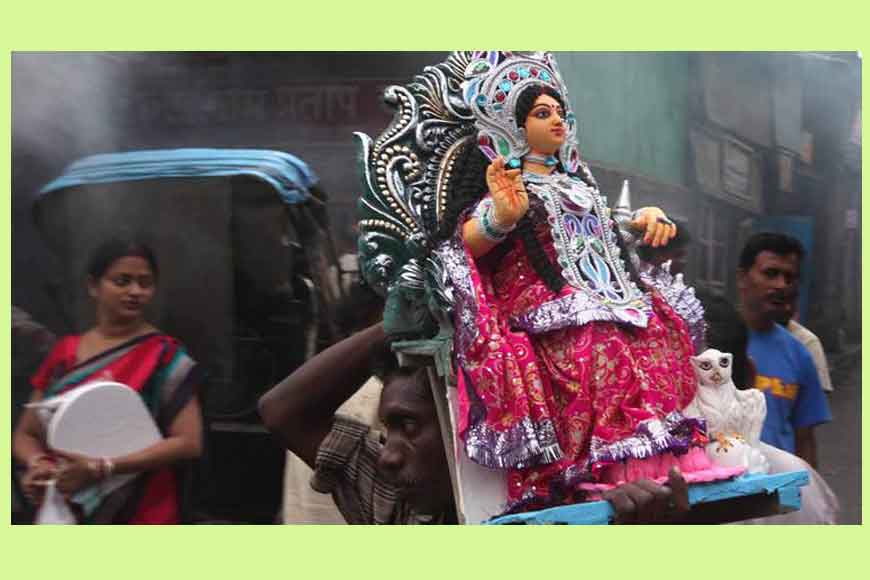How Lakshmi Puja of Bangaals and Ghotis of Bengal are different!

Lakshmi Puja in Bengal is not a mere successor to Durga Puja celebrations or worshipping of the Goddess of wealth. Rather, in Bengal it is all about regional identity and defines the vast chasm that practically divided the Bangaal from Ghoti, the Barendra from Rarh, the Purba-bongiyo (East Bengal) from Paschim-Bangiyo (West Bengal) Bengalees. Lakshmi Puja is celebrated in accordance with harvest cycles. Among the original inhabitants of West Bengal or Ghotis, Goddess Lakshmi is worshiped many times a year, even on the night of Kali Puja. While, Kojagori Laksmi Puja is the exclusive domain of the Bangaal held on the full moon of the month of Ashwin.
Partition of Bengal after India’s independence displaced more than 15 million people, from what was then called East Pakistan, and a majority of Bangaal, as they came to be known as migrated to West Bengal that was not adequately equipped to handle the large influx of immigrants. The locals or Ghotis started viewing Bangaals as intruders, lacking refinement and culture. Since the immigrants were forced to leave behind most of their property and jobs in East Bengal, poverty was a natural outcome for the refugees. Moreover, the large influx of expatriates created competition in the job market and housing for the local population who began considering them as a nuisance. These socio-economic issues led to cultural marginalisation or the great divide between the Ghoti and Bangaal.
Amid this backdrop, celebration of Kojagari Lakshmi Puja gained momentum in West Bengal, as Bangaals await as a big social event, held with a lot of pomp and grandeur. The poverty resulting from migration had initially forced the Bangaal refugees to scale down the celebration in their new-found homeland. Despite that, Lakshmi Puja offered the perfect occasion to display their distinct cultural identity. Kojagari Lakshmi Puja was not just a ritual involving worship of Goddess Lakshmi for the Bangaals, it became an expression of their distinct cultural identity.
Rituals vary according to place of origin in Bangladesh. Those who hail from Dhaka, Bikrampur, Mymensingha --- have certain rituals that vary vastly from those who hail from Khulna and Sylhet. Some have the ritual of making exquisite Kola gachher bhela (small replica of ships made with the bark of the banana plant) signifying success in business or dhaner gola (place for storing paddy) for a bountiful harvest. Alpona of symbolic feet of Goddess Lakshmi are drawn to show her entering the house. Though Ghotis have usually adhered to a simple vegetarian bhog during Lakshmi Puja, in many Bangaal house-holds, elaborate Prasad of home-made sweets like narkelnaru, tilnaru, moya, murki etc are offered.
With time, dichotomy between Bangaal and Ghoti has receded to the annals of history and what remains is restricted to jovial debates between two communities regarding food and football. However, Kojagori Lakshmi Puja still adheres to its panchali and age-old rituals.









